Understanding Dental Anxiety and Its Impact
Dental anxiety affects a substantial portion of the population, with estimates suggesting that between 50% and 80% of adults experience some level of unease related to dental visits. This anxiety can lead to a cycle of avoidance, worsening oral health, and more invasive treatments. Understanding the causes and manifestations of dental anxiety is essential for creating patient-centered strategies that enhance comfort and encourage regular dental care.
Causes and Manifestations of Dental Anxiety
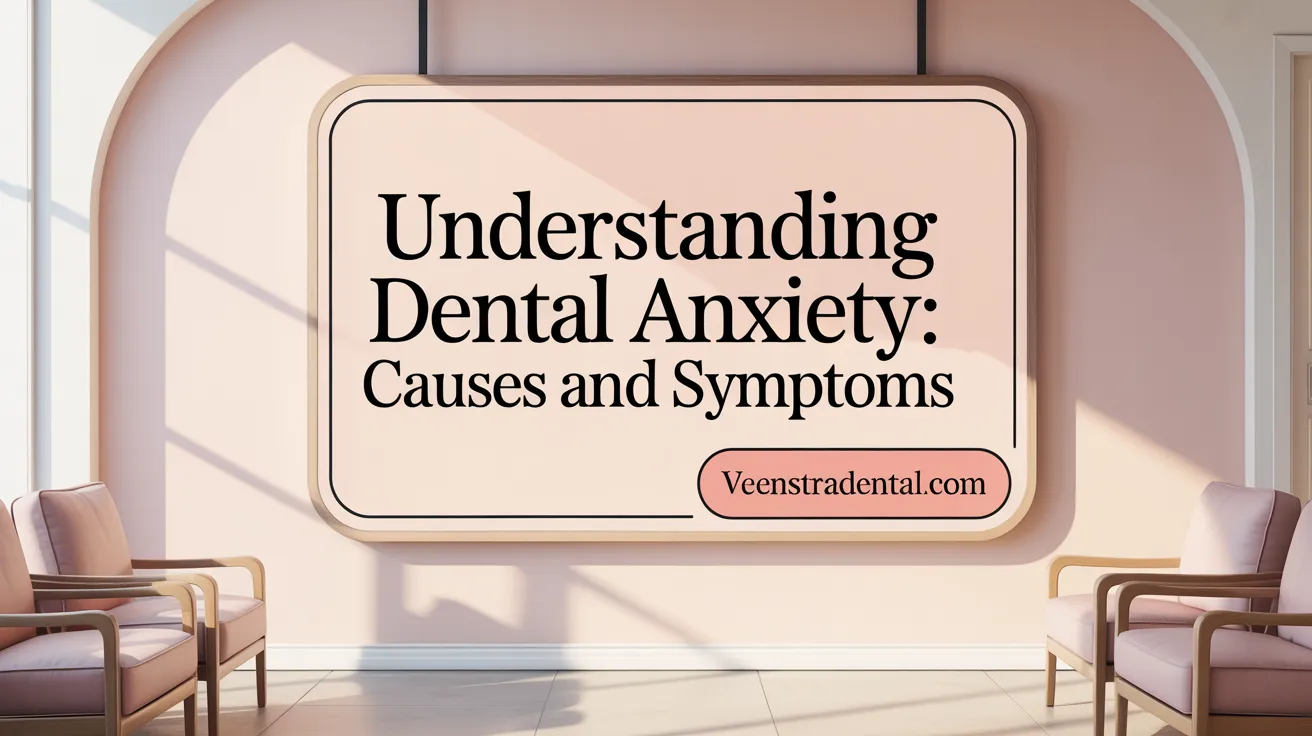
What causes dental anxiety and how does it manifest?
Dental anxiety is a common issue affecting between 50% and 80% of adults. It arises from a mix of causes including fear of pain, previous negative dental experiences, fear of needles and dental instruments, and feelings of loss of control during treatment. Sensory triggers like the sound of drills, smells, and the clinical environment can further heighten anxiety. Biological factors also play a role, with the body’s natural fight-or-flight response activating, and genetic predispositions making some individuals more susceptible (Dental anxiety causes, Pathways of dental fear and anxiety).
Psychological origins include traumatic events during childhood or adulthood, learned fears from family or peers, and negative media portrayals. Environmental and cognitive factors, such as mistrust of dental professionals and fear of the unknown, also contribute significantly (Causes of dental fear and anxiety, Origins of dental fear.
Symptoms of dental anxiety can be physical and behavioral. Individuals may experience rapid heartbeat, sweating, shaking, dry mouth, nausea, and visible distress such as crying or panic. Many develop avoidance behaviors, skipping dental appointments, which creates a cycle of worsening oral health and potentially more invasive and painful treatments (Physical responses to anxiety, Avoiding dental visits).
Understanding these causes and symptoms is essential for dental professionals to effectively recognize and manage anxiety, using tailored approaches that address each patient's unique fears and experiences (Managing dental anxiety, Strategies to reduce dental fear).
Identifying Dental Anxiety: Assessment Tools and Techniques
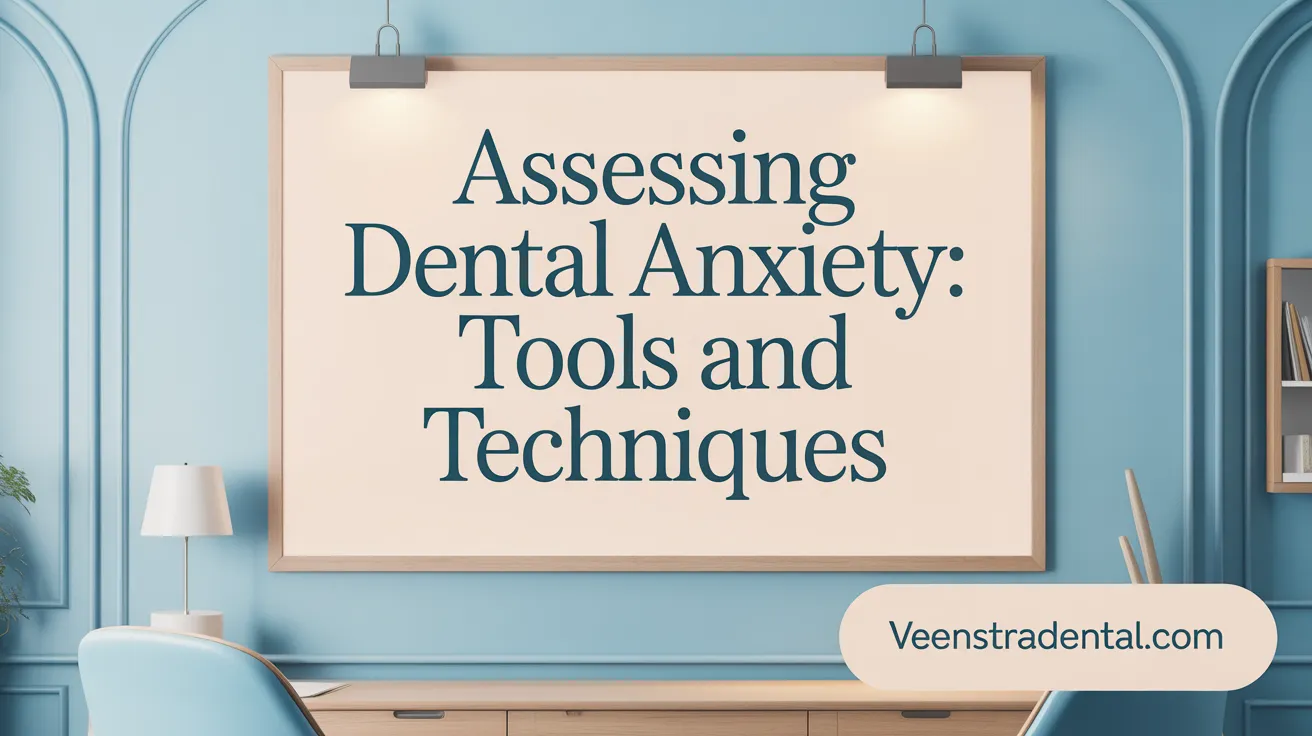
How is dental anxiety assessed in patients?
Dental anxiety is commonly identified using a combination of subjective assessments and objective assessment tools to accurately understand a patient’s fear levels and tailor management accordingly.
Subjective Assessments
Dentists often begin with direct interviews to explore patients' feelings and experiences related to dental visits. Standardized questionnaires are widely used for consistent evaluation, including:
- Corah’s Dental Anxiety Scale (CDAS): Measures anxiety through questions about reactions to specific dental situations.
- Modified Dental Anxiety Scale (MDAS): An updated version used to categorize anxiety levels from mild to phobic.
- Dental Fear Survey (DFS): Assesses specific fears and behaviors linked to dental anxiety.
These tools help clinicians quantitatively gauge anxiety severity and identify patients who may require specialized care.
Objective Physiological Measures
To complement subjective reports, physiological indicators can objectively assess anxiety by monitoring:
- Blood pressure and pulse rate increases,
- Galvanic skin response (sweating-related skin conductance),
which reflect the patient’s autonomic nervous system activation in response to stress (source).
Importance of Early Identification
Recognizing dental anxiety early during initial patient interactions allows dental professionals to implement personalized strategies—including communication, behavioral techniques, or sedation—to effectively manage anxiety (source. This proactive approach improves patient cooperation, reduces avoidance of care, and ultimately supports better oral health outcomes.
Psychological Techniques for Managing Dental Anxiety
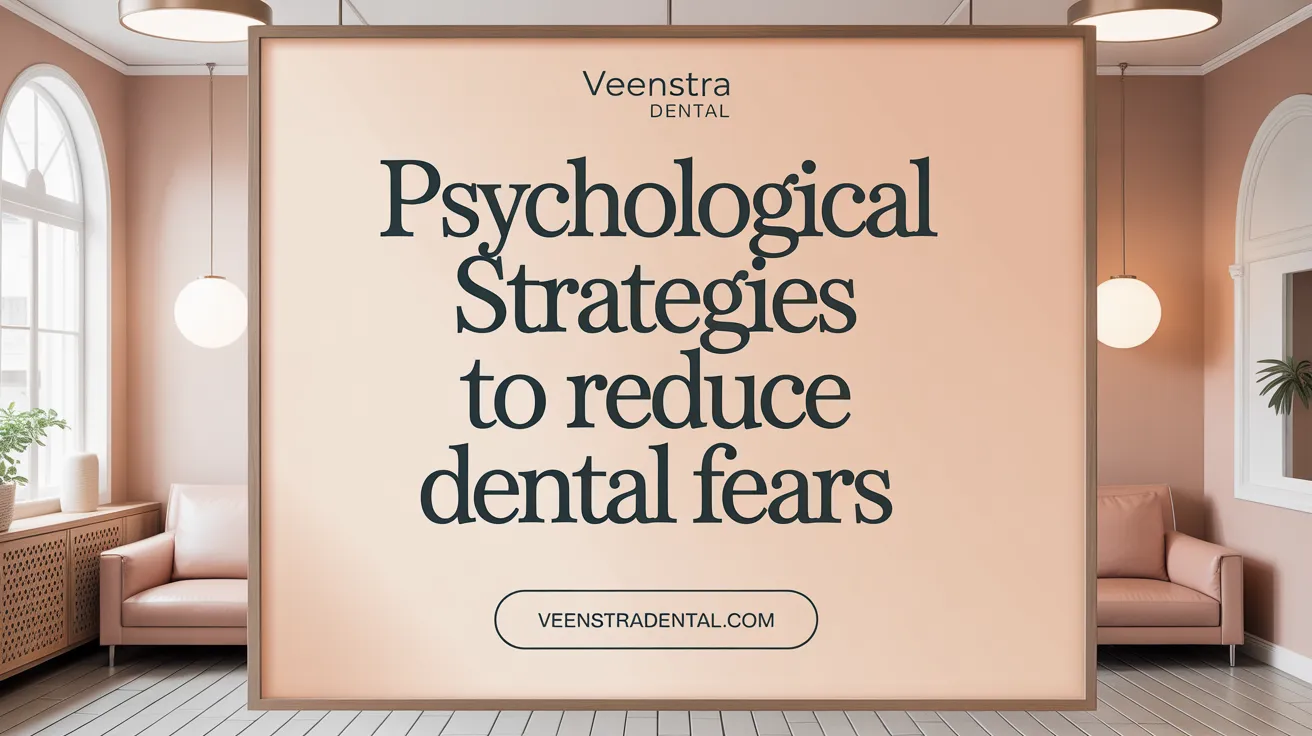
What psychological methods help reduce dental anxiety?
Psychological management of dental anxiety features several effective methods. At the forefront is Cognitive Behavioral Therapy (CBT), a structured approach that helps patients identify and alter negative thoughts and behaviors linked to dental fears. CBT has been proven highly successful in decreasing dental phobia and improving treatment cooperation.
What relaxation techniques are helpful?
Relaxation strategies play a crucial role in calming physiological and emotional stress responses. Techniques such as progressive muscle relaxation, where muscle groups are alternately tensed and relaxed, help ease tension. Diaphragmatic breathing encourages slow, deep breaths to activate the body's relaxation system. Guided imagery transports patients mentally to soothing environments, reducing anxiety during appointments.
What behavioral approaches assist patients?
Behavioral methods include systematic desensitization, which gradually exposes patients to feared dental stimuli combined with relaxation training to lessen anxiety. Positive reinforcement rewards cooperative behavior, encouraging continued calmness during treatments.
How do distraction methods work?
Distraction techniques divert patient attention from anxiety-provoking stimuli. Listening to music, watching videos, or using virtual reality headsets effectively reduce stress by engaging other senses and focusing the mind away from discomfort or fear.
How important is trust and communication?
Building a trusting relationship between the dentist and patient is essential. Clear, empathetic communication about procedures demystifies treatment steps, helps normalize patient feelings, and provides reassurance. Patients who feel heard and understood tend to experience less anxiety and greater comfort during dental visits. For more on this, see Effective dentist-patient communication and Building trust with dental patients.
Creating a Calming and Comfortable Dental Environment
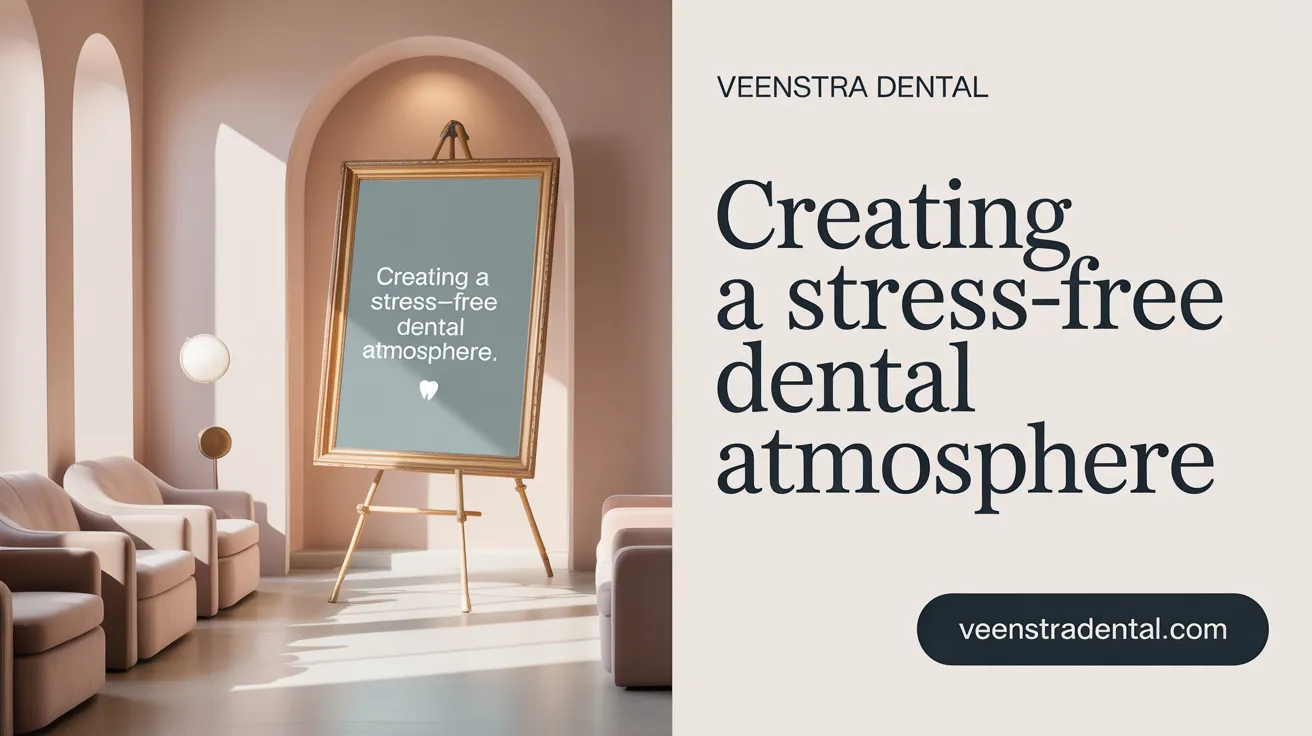
How can the dental environment reduce patient anxiety?
The dental environment plays a crucial role in easing patient anxiety and making visits more comfortable. Through environmental modifications in dental offices, dental offices can transform from intimidating spaces into calming retreats.
Lighting, Sounds, and Aromatherapy: Soft, warm lighting helps create a peaceful atmosphere, minimizing the harshness often associated with clinical settings. Gentle background music or nature sounds can mask unpleasant dental noises, contributing to relaxation. Aromatherapy using scents like lavender or chamomile further soothes patients' nerves.
Comfort-Driven Design: Modern dental chairs are ergonomically crafted with features such as lumbar support, cushioned seating, and adjustable headrests to provide physical comfort during procedures. The office layout prioritizes patient ease by positioning instruments out of direct sight and organizing spaces to reduce crowding or clutter. Comfort-driven dental office design ensures physical ease and emotional reassurance.
Amenities for Relaxation: Providing noise-canceling headphones, weighted blankets, stress balls, or wristbands that offer bilateral stimulation can help distract patients and reduce anxiety. These items give patients a tangible sense of comfort and control over their environment. Distraction methods and patient comfort techniques like these are effective for anxiety relief.
Technological Innovations: Advanced tools like the DentalVibe system use gentle vibrations to deliver virtually painless oral injections, significantly lowering needle-related fears. Computer-controlled local anesthetic delivery ensures steady, controlled administration of anesthesia, promoting a less intimidating experience. These technological aids, combined with compassionate care, result in less painful procedures and enhanced patient trust.
By integrating these environmental and technological strategies, dental practices foster a welcoming and reassuring space that facilitates a more relaxed and positive dental experience.
Pharmacological Approaches Complementing Psychological Care
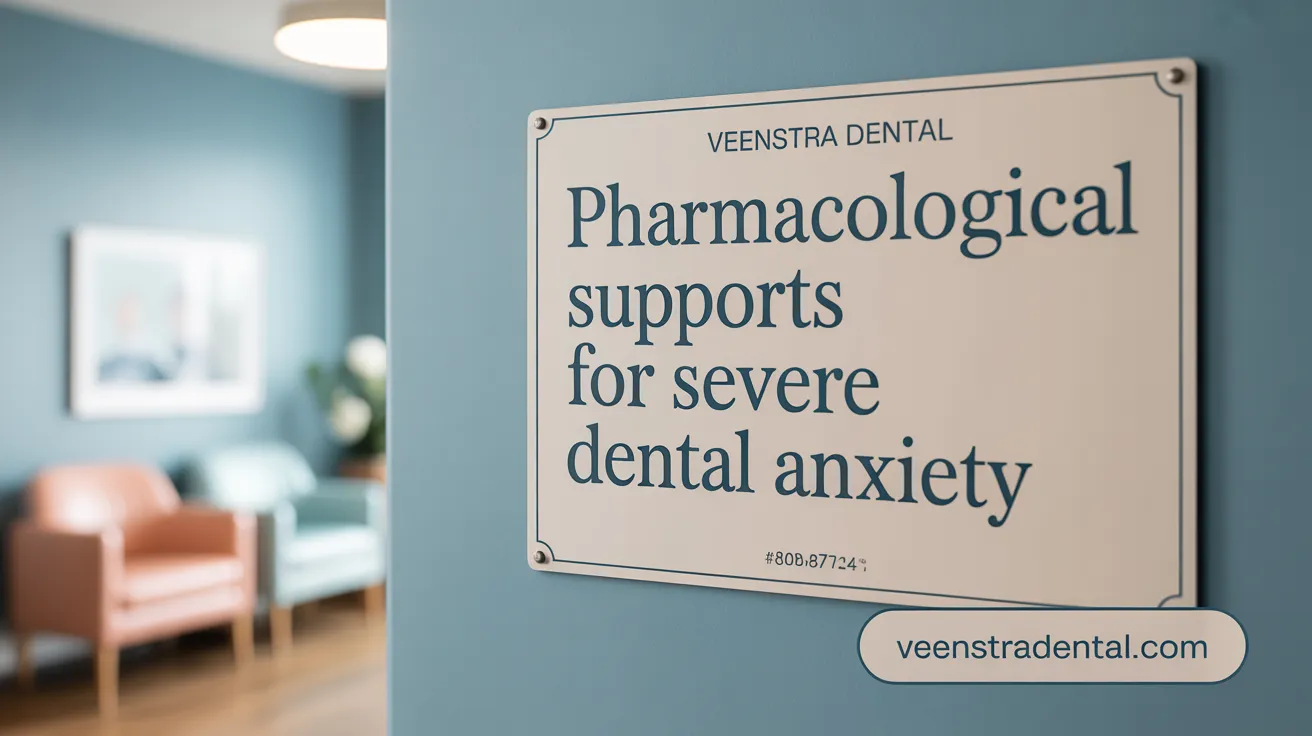
When and how are pharmacological methods used to manage dental anxiety?
Pharmacological interventions are typically reserved for patients experiencing severe dental anxiety or phobia, especially when psychological methods alone are insufficient. These approaches help patients tolerate dental appointments that would otherwise be too distressing.
Types of sedation used in dental anxiety management
- Nitrous oxide (laughing gas): Provides mild sedation and relaxation while keeping patients awake and responsive.
- Oral sedatives: Oral benzodiazepines are prescribed to reduce anxiety before the visit.
- Intravenous (IV) sedation: Offers deeper sedation with controlled patient consciousness.
- General anesthesia: Utilized for extreme cases requiring full unconsciousness, often during invasive or lengthy procedures.
Safety and administration
Sedation and anesthesia require administration by trained dental professionals with proper patient monitoring to ensure safety. This includes monitoring vital signs and readiness to manage any adverse reactions, as described in training and equipment for sedation.
Combining pharmacological and psychological therapies
For the best long-term results, pharmacological sedation is often combined with psychological methods such as cognitive behavioral therapy (CBT). This integrated approach addresses immediate anxiety while helping patients develop coping skills to reduce dependence on sedation over time.
Effective Communication and Patient-Centered Care for Anxiety Reduction
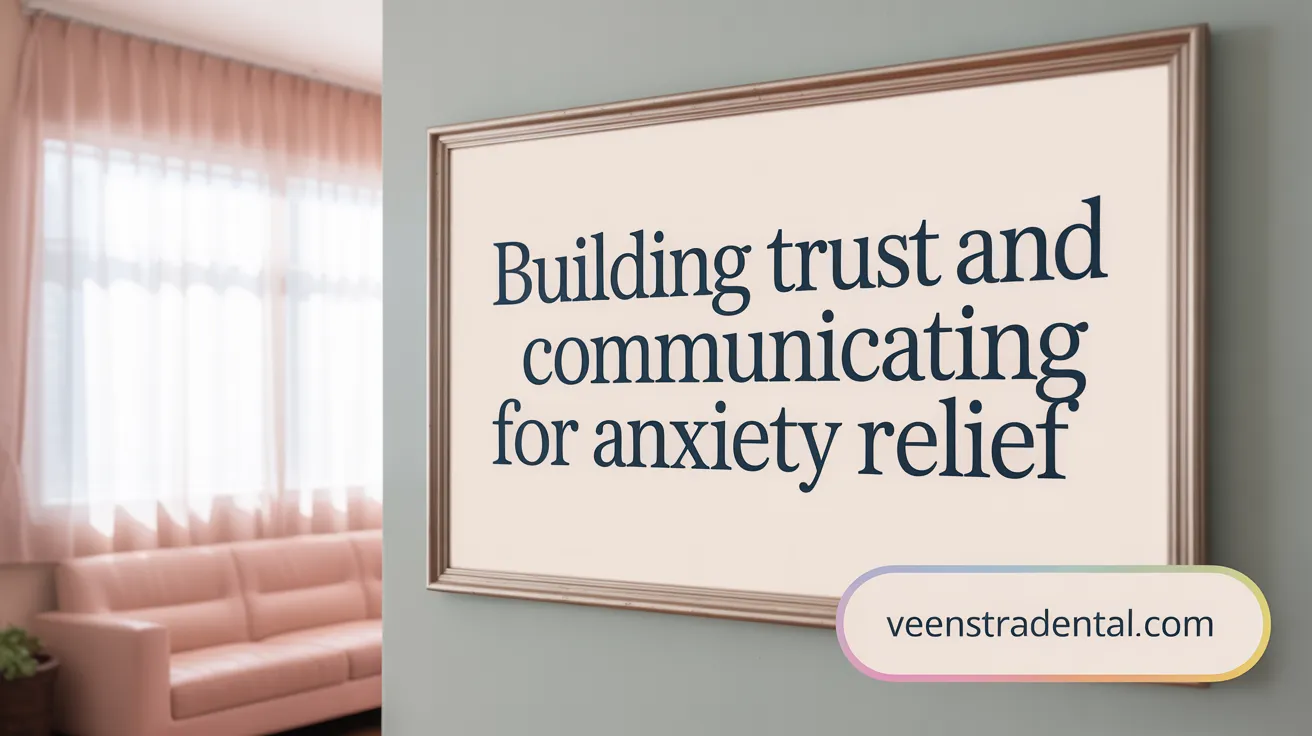
How can dentist-patient communication reduce dental anxiety?
Clear and empathetic communication plays a crucial role in easing dental anxiety. Dentists who explain procedures in simple, non-technical language help demystify the treatment process, making patients feel more comfortable and informed (Effective dentist-patient communication).
Building trust through communication
Using visual aids such as models, diagrams, or videos can aid patient understanding and engagement. Active listening and encouraging questions show patients that their concerns are valued, fostering trust (Establishing trust with dental patients. Frequent check-ins during treatment sessions reassure patients and promote a sense of safety (Effective communication to reduce dental anxiety).
Empowering patients with control
Allowing patients to have control—through hand signals to pause, or visualization techniques that prepare them for each step—helps reduce feelings of helplessness and fear (Providing patient control during dental treatment. This empowerment is critical in managing anxiety and improving cooperation (Building trust in dental care).
Personalized care and involvement
Developing individualized care plans that respect each patient's pace, fears, and preferences encourages a collaborative approach (Patient-centered dental care). When patients are involved in decision-making and treatment planning, their comfort levels increase significantly (Patient comfort in dentistry).
Encouraging regular visits and positive reinforcement
Maintaining consistent dental visits fosters familiarity with the environment and staff, which helps reduce anxiety over time (Importance of regular dental visits). Praising patients and offering positive reinforcement after appointments can create beneficial associations and motivate ongoing dental care (Positive reinforcement in dental care.
Through thoughtful communication and patient-centered strategies, dental teams can substantially decrease anxiety, improve patient experience, and promote oral health maintenance (Managing dental anxiety.
Towards Anxiety-Free Dental Care
Addressing dental anxiety requires a multifaceted approach combining psychological therapies, environmental adaptations, trusted communication, and when needed, pharmacological support. Creating a comfortable, calming dental experience empowers patients to overcome fear, encourages regular care, and improves both oral health outcomes and overall well-being. As dental professionals adopt patient-centered techniques and innovations designed to reduce anxiety, more individuals can access care confidently, breaking the cycle of avoidance and distress.
